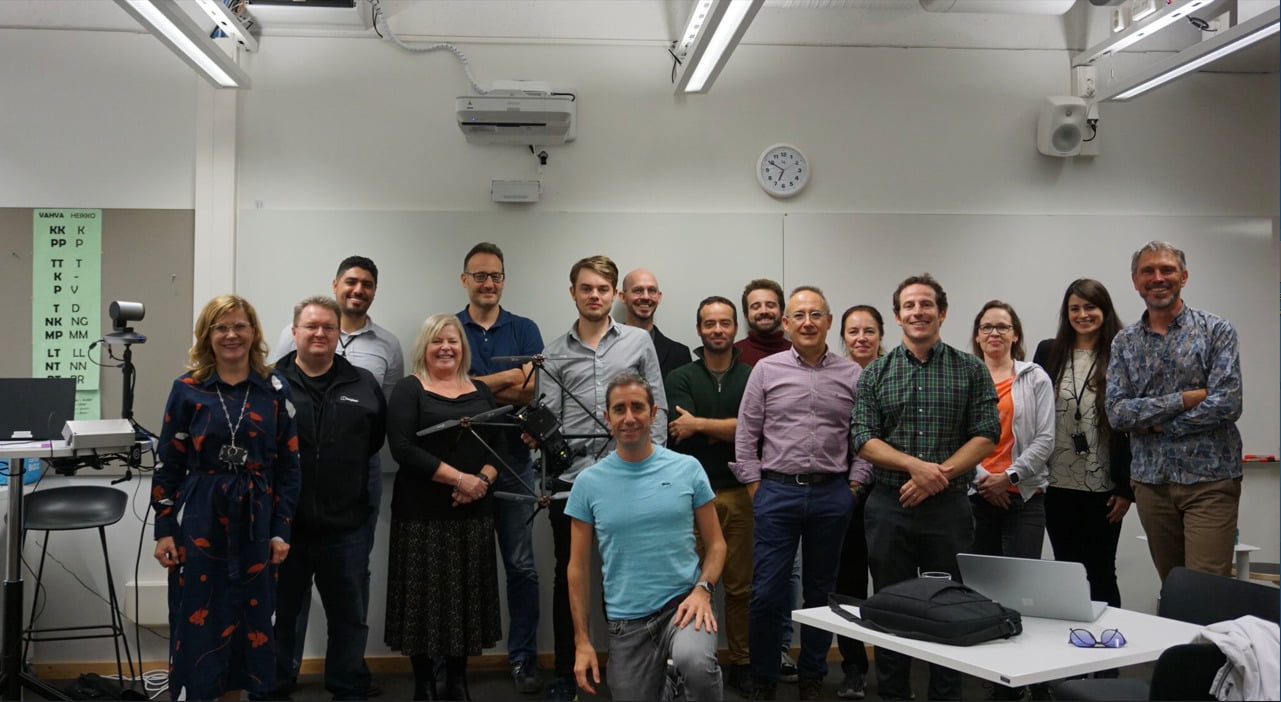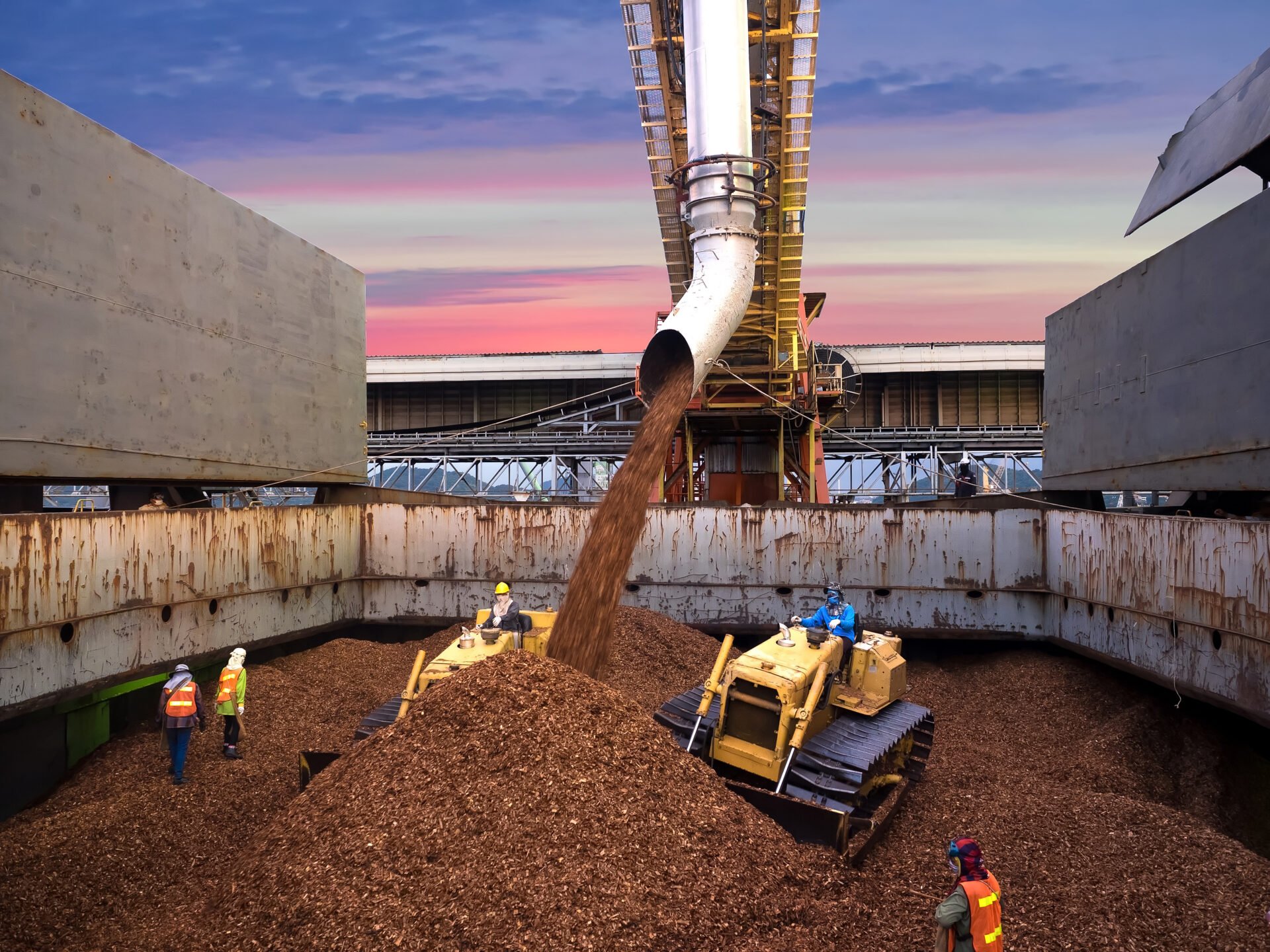FEROX: AI, Data, and drones to increase the safety of wild berry pickers
Nestled amidst its untamed forests, wild berries, and vast lakes, Finland is an idyllic wonderland. This natural wildlife profoundly influences the quality of life in the country. It’s no wonder that Finland consis...

Nestled amidst its untamed forests, wild berries, and vast lakes, Finland is an idyllic wonderland. This natural wildlife profoundly influences the quality of life in the country. It’s no wonder that Finland consistently ranks as the number one nation on the World Happiness Report. One of Finland’s most abundant natural resources is its naturally-grown wild berries, which flourish in the pristine Finnish forests.
However, despite their abundance, a staggering 90% of the wild berry crop remains unharvested. This issue is compounded by the scarcity of berry pickers and the challenging, often unsafe, working conditions in the forest.
Complicating matters further is the fact that the majority of berry pickers are foreign workers unfamiliar with both the Finnish language and the complex Finnish forest landscape.
To address these challenges and better manage and protect berry pickers, the innovative FEROX project was launched on September 15th, 2022, during a partner meeting in Tampere, Finland. Comprising nine organisations across multiple industries, the FEROX consortium aims to leverage cutting-edge technology to create a safer and more efficient working environment for berry pickers.
The FEROX Vision: Empowering Wild Berry Picking with AI, Data, and Drones
The FEROX project embodies a deep understanding of how artificial intelligence (AI) is reshaping manual labour. It harnesses advancements in AI, data analytics, and drone technology to map, monitor, and manage both the berry pickers and their forested surroundings.
The FEROX vision encompasses four primary objectives:
1. Developing a Safety-Centric Solution:
The FEROX project aims to construct a comprehensive solution underpinned by AI, computer vision, and drones to support harvesting activities and enhance worker safety.
2. Validation Through Two Crucial Phases:
- Navigation Phase: During this stage, the project will integrate the solution, focusing on safety measures, forest modelling, and crop assessment. This phase will test the solution’s efficiency in navigation and locating services.
- Logistics Optimisation Phase: The second phase aims to demonstrate the solution’s effectiveness in operational settings, with a focus on optimising operations and providing support to workers.
3. Enhancing Working Conditions:
The project seeks to develop technical services, including equipment, acquisition systems, software applications, and a user-friendly human-computer interface, to improve the overall working conditions for berry pickers.
4. Evaluating Impact on Workers:
FEROX will systematically assess the effects of its innovations on berry pickers, ensuring that it positively impacts their working conditions.
Meet the FEROX team: A Collective Force for Change
The FEROX team comprises nine partner organisations:
Deep Forestry
Deep Forestry builds drones to automate and digitise commercial forestry fieldwork and tree-based agriculture. Within the FEROX project, their role is to provide drones equipped with cameras and sensors that will collect much-needed data.
Fondazione Bruno Kessler (FBK)
Fondazione Bruno Kessler is an award-winning research institute. FBK specialises in the areas of Information Technology, AI, Sustainable Energy, Sensors and Devices, Cybersecurity, Digital Society, and Digital Industry.
Their expertise will inform much of the technical aspects of the project, like machine vision and 3D applications.
Tampere University (TAU)
Tampere University is a multidisciplinary institution in Finland, focused on research and innovation in technology, health, and society. Within the FEROX project, their areas of focus are the research and dissemination of the solution’s core technologies.
Polytechnic University of Valencia (UPV)
The Polytechnic University of Valencia is Spain’s leading technological university. UPV’s role within FEROX is focused on the technical management of the overall project, as well as developing core technologies.
Gemmo AI
Gemmo AI helps companies innovate their products with computer vision and deep learning technologies. Gemmo’s role within the FEROX project is to design and develop computer vision and machine learning algorithms.
By doing so, Gemmo aims to fulfil three goals; optimising yield, increasing workers’ safety, and increasing the quality of the harvest.
National Land Survey of Finland (DF)
The National Land Survey of Finland is a 200-year-old organisation that safeguards, monitors, and maps Finnish land. As part of the FEROX project, The National Land Survey of Finland will support research and mapping efforts.
INGENIARIUS
INGENIARIUS is an organisation devoted to the development of mobile robotics solutions. Within the FEROX project, INGENIARIUS will spearhead system integration by coordinating the efforts of all the partners.
The INGENIARIUS team is also responsible for fleet management and the development of the user interface.
ARKTISET AROMIT – Arctic Flavours Association (AFA)
The Arctic Flavours Association is a Finnish non-wood forest products association focused on the production and maintenance of wild berries, mushrooms, herbs, and special forest products. Their goal is to promote the gathering, processing, and use of natural products while also improving their quality.
The AFA will lead the dissemination and demonstration of the FEROX project.
Cranfield University
Cranfield University is a specialist postgraduate institution specialising in the fields of technology and management. Within the FEROX project, CU will conduct human analysis, with the aim of measuring the psychological impact of the project on workers.
Cranfield University will also be key to the ethical management of the FEROX project.
How AI, Data, and Drones Enhance Wild Berry Picking
By leveraging AI, data analytics, and drones, the FEROX project introduces a transformative approach to berry picking. Autonomous drones, equipped with cameras and sensors, collect critical data and generate 3D models of the forest.
This enables accurate estimation of berry locations, quantities, and types. The collected data forms the basis for AI models that aid workers in locating berries.
Additionally, FEROX provides navigation and locating services, along with physical support, to wild berry pickers, significantly enhancing worker safety. Ultimately, the FEROX project introduces cutting-edge tools to create a safer and more dependable environment for berry pickers, addressing the challenges that have long plagued this vital industry.
Future commercial applications of FEROX technology
The impact of the FEROX project is poised to extend far beyond the forested landscapes of Finland. Anticipated developments across three key sectors highlight the project’s potential:
- Science: FEROX will generate novel insights into the effects and benefits of AI technologies on human workers, advancing our understanding of the intersection of technology and labour.
- Society: FEROX has the capacity to foster greater trust and acceptance of AI, data analytics, and drone technology. Local communities may be encouraged to embrace these technologies in various commercial activities, thus enhancing overall societal well-being.
- Economy: By increasing the overall yield of wild berries, the FEROX project opens doors to new business opportunities, potentially reshaping the economic landscape of berry harvesting in Finland.
Final Thoughts
As the lead AI partner within the FEROX consortium, Gemmo AI is excited to embark on this transformative journey. We eagerly anticipate the project’s progress as we work diligently towards a safer and more sustainable future for wild berry pickers. Stay tuned for updates on this groundbreaking project.
Author: Johanna Walsh



